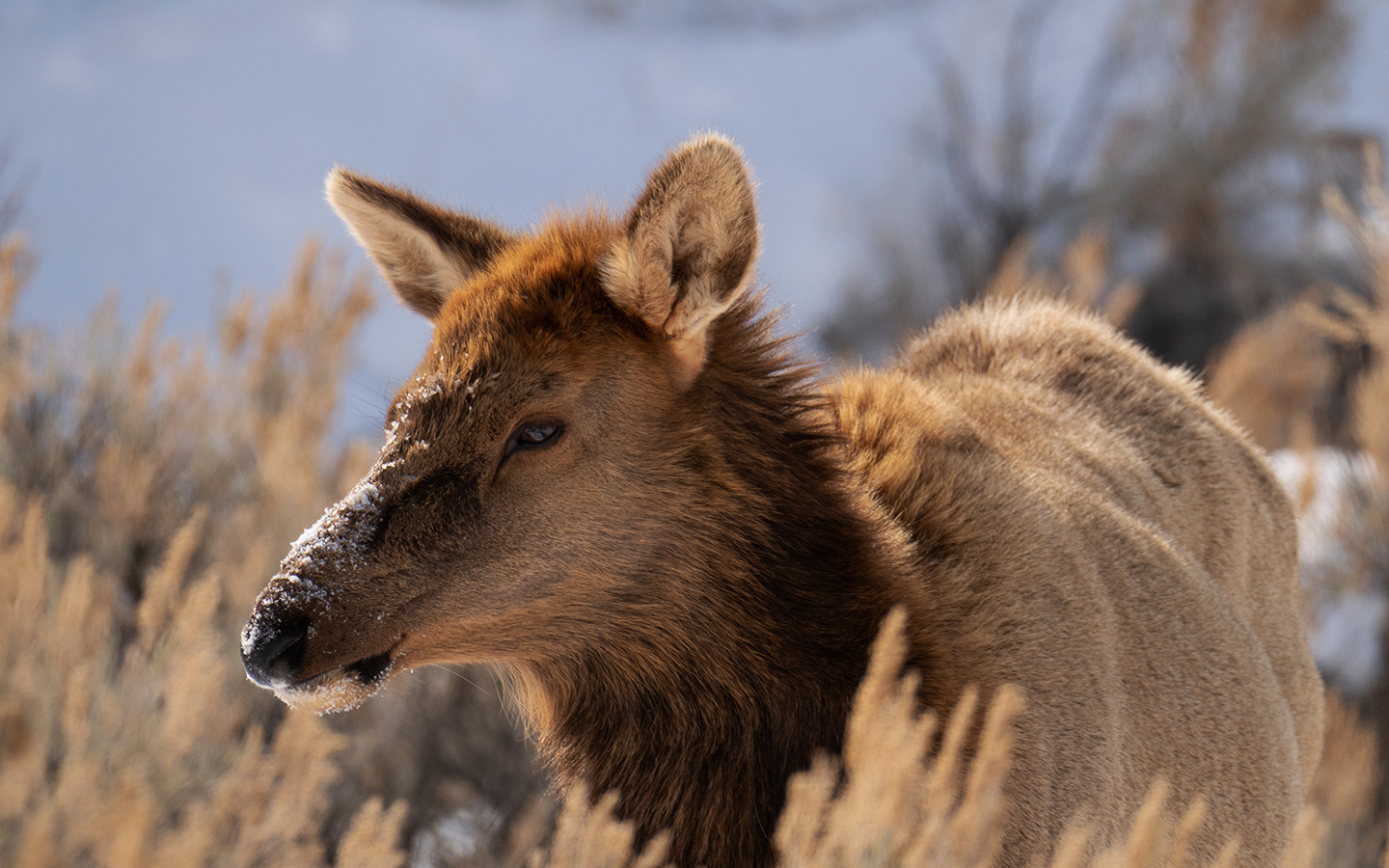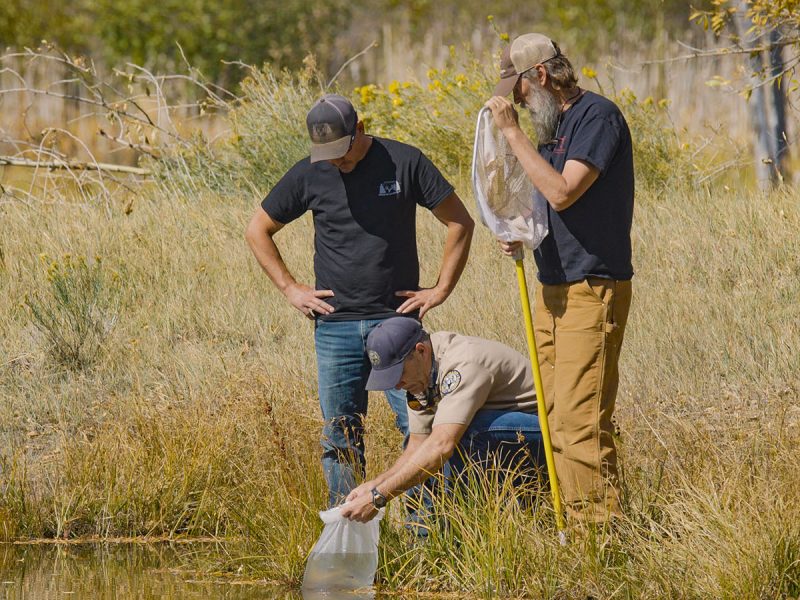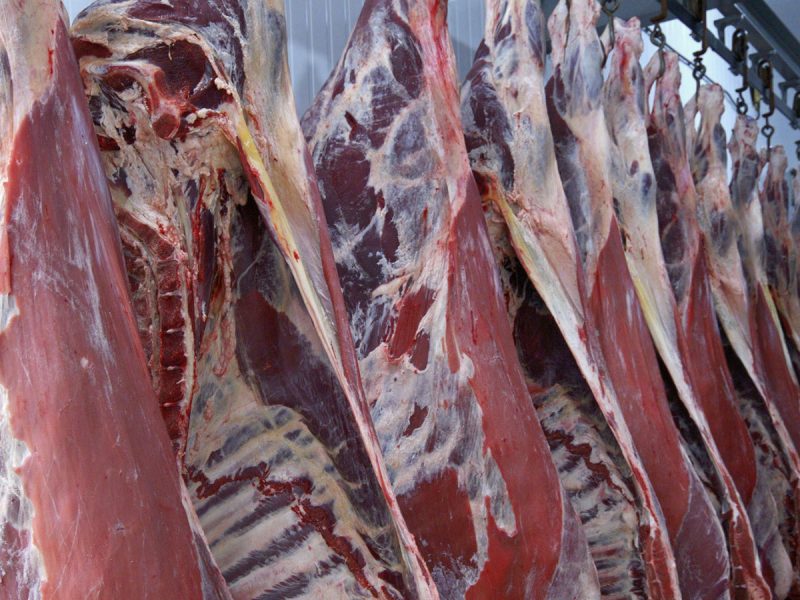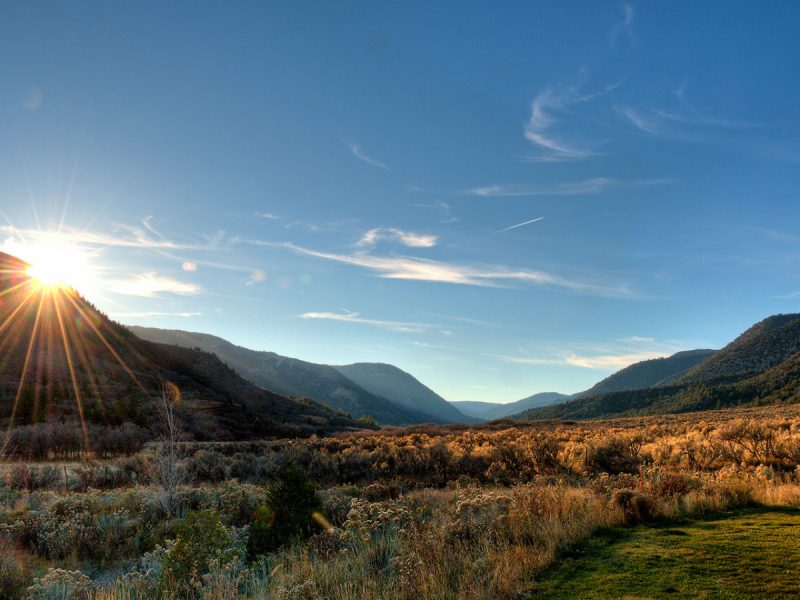In Paradise, AI for Elk
When a blast of Arctic air gripped much of the nation during the second week of February, the mercury dove to 25 below in a well-known glacially-carved river valley outside of Yellowstone National Park. Montana’s aptly-named Paradise Valley follows a 30-mile stretch of the Upper Yellowstone River just outside of the park’s north entrance, where irrigated fields, working ranch lands and second-home properties are tucked between the craggy peaks of the Absaroka Mountains to the east and the vast and varied Gallatin Range to the west.
Katabatic winds drifted snow across the grass-swept valley in February, where some 6,000 elk annually seek refuge from high-mountain winters. Druska Kinkie, whose family operates a third-generation cattle ranch in the area, saw 500 elk skirt through one of her pastures that week. A healthy-looking herd, well-adapted to withstand months of frigid cold, the elk bring wonder and awe to wildlife viewers who flock to the valley. But for Kinkie, spotting elk near her cattle sends her into a spiral of worry.
Why? Many elk in the Greater Yellowstone Ecosystem have been exposed to a bacterium that causes brucellosis—a disease that can be transmitted between elk, bison, cattle, and, rarely, humans. Brucellosis often causes abortions in infected females and has the capacity to bankrupt cattle producers. Bison are largely kept from straying beyond the park boundary and are therefore less likely to transmit the disease to Paradise Valley cattle; elk, however, move freely from mountain top to valley floor, from public land to private.
“It feels like any elk is a potential threat,” Kinkie says. “You can’t even enjoy the animal for what it is—which is magnificent. I see elk and my stomach clenches and the stress starts.”
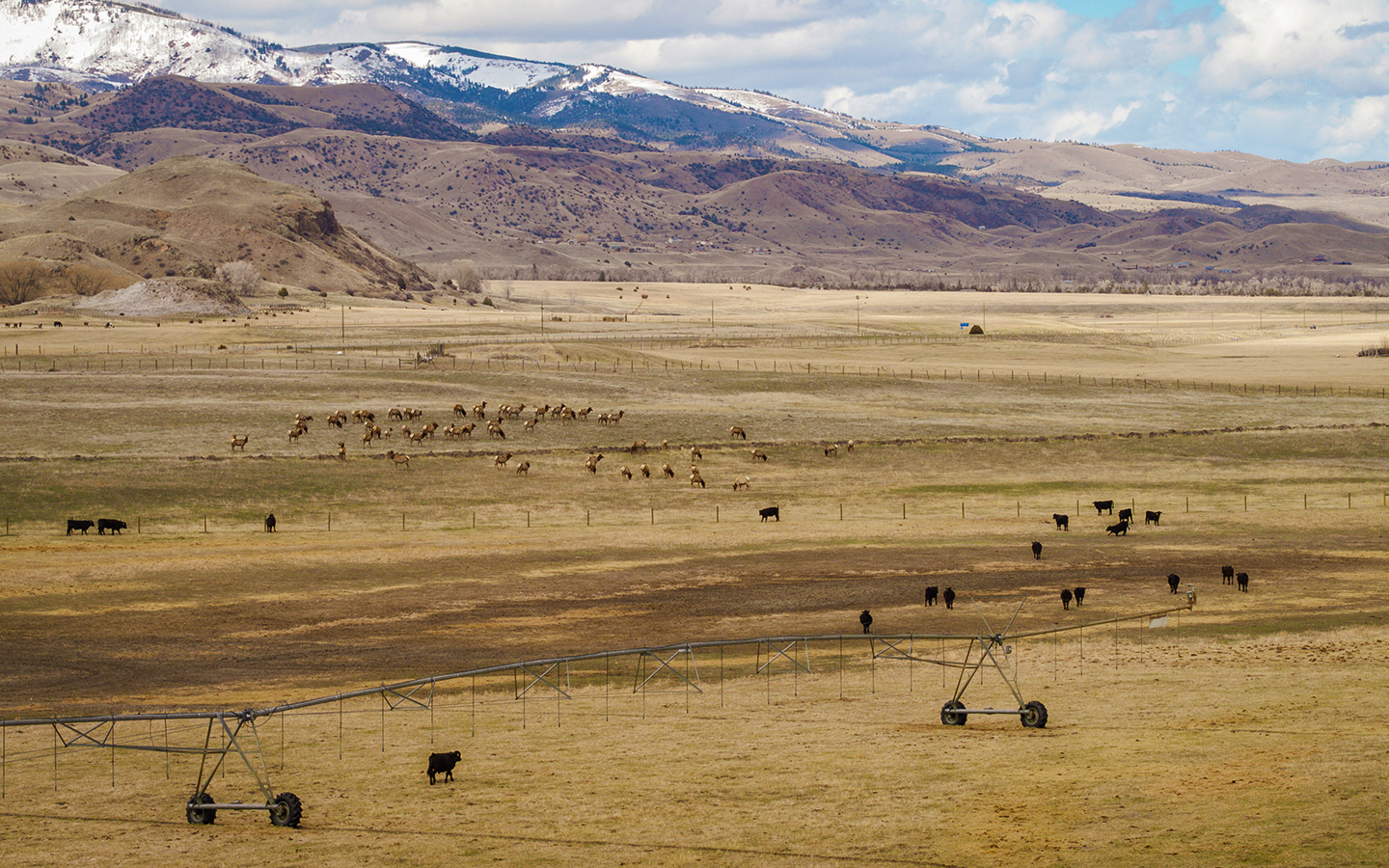
A herd of elk graze in a pasture across from black angus cattle in the shadow of the Absaroka Mountains near Pray, Montana. Elk can transmit the bacterial disease brucellosis to cattle, which results in costly quarantines. Photo ©2019 Wes Overvold, courtesy of PERC.
Overrun
According to Montana Fish, Wildlife and Parks (FWP), pregnancy rates aren’t what drive elk population fluctuation in the Greater Yellowstone, so brucellosis shouldn’t threaten population numbers. But while of low consequence for elk, the disease is of a much higher consequence for livestock. Producers in the area are required to vaccinate their cattle and test prior to transport. Positive test results for one rancher could lead to mandatory testing and shipping holds for their neighbors, with delayed or canceled cattle shipments causing producers to lose thousands of dollars.
When an infected animal aborts, it expels Brucella abortus—the bacterium that causes brucellosis. If another animal licks the area or consumes grass or feed that has been infected, it can introduce the bacteria into its system and potentially get sick.
FWP provides landowners with a handful of tools that includes hazing, fence modification, stackyard fencing, habitat improvements and special private-land hunts intended to prevent disease transmission, private property damage, and crop loss when elk eat growing crops or hay. However, Kinkie says producers need more tools in the toolbox. Hazing and hunting have variable success, depending on personnel, geography and forage, not to mention elk often cross private land at night, limiting the applicability of special hunts.
“Right now we’re overrun with elk,” Kinkie says of the Paradise Valley floor. She attributes the number of elk on private land to changes in weather patterns, an increasing carnivore population in the mountainous wildlands surrounding the valley, shifts in hunting regulations, and many land use changes. “I keep trying to think outside of the box and I keep trying to question why we do what we do. We need flexible, reliable solutions that will work. The elk are an ever-changing dynamic on the landscape.”
More Tools
Jeff Reed spent the summers of his youth on the banks of the Upper Yellowstone River. After making his living as a tech executive, he returned to Paradise Valley, where he now owns a tourism business and produces alfalfa and commercial hops. As a member of the Upper Yellowstone Watershed Group, he’s working with his neighbors to expand the tools that are available to reduce conflicts with wildlife while also helping ranchers stay in business.
Reed is a member of a committee of area residents and producers that is developing strategies that improve wildlife migrations, stemming from former Secretary of the Interior Ryan Zinke’s 2018 order that Western states work to improve habitat in big game winter range and migration corridors. “Private landowners have to be involved,” Reed says. “Without those private ranches, you’re going to have subdivisions and you’re not going to have any migration.”
In 2019, Reed’s group partnered with the Property and Environment Research Center (PERC) to better understand landowner perspectives and their challenges with wildlife in Paradise Valley. The resultant report, “Elk in Paradise: Conserving Migratory Wildlife and Working Lands in Montana’s Paradise Valley,” provided recommendations that could reduce wildlife-landowner conflict. Specifically, the report suggested a need for market-based, innovative solutions. The Upper Yellowstone Watershed Group has since launched a “Smart” Ranching initiative in partnership with Montana State University.
Tech Savvy
In addition to early discussions about wildlife corridors and structures like overpasses and underpasses that help critters cross Highway 89 as they move from one side of the valley to the other, the Upper Yellowstone Watershed Group is working to utilize technology in order to lessen some of the challenges that come with wildlife on private land. This spring, a group of producers is piloting the program, testing the effectiveness of different technologies such as drones and cameras with thermal imaging and artificial intelligence. Ranchers will use these technologies to monitor for the presence of elk or large carnivores.
Cameras, in particular, might be able to alert a producer when one of their cows has calved, whether a carnivore is in the area, or if elk are hanging around close to cattle. Advanced technology similar to facial-recognition improves the accuracy of a trail camera, meaning if a rancher just cares about the presence of elk, he or she can specify that to the camera and it will only trigger a response when elk pass by. The cameras can then send a notification to a cell phone, allowing a rancher to respond in real time.
“They don’t solve the problem, but they replace a human being and put them there at night to get the evidence to improve management or prove if an action was effective,” Reed says. And having data—such as knowing exactly where elk are crossing onto your land—can mean the difference for securing funding and support to solve a problem.
Malou Anderson-Ramirez, who ranches with her family in Tom Miner Basin at the head of Paradise Valley, has partnered with Reed to implement some of the “Smart” Ranching tools. She is also spearheading a project using TEAL Tags, a wellness microchip that uses GPS and measures body temperature and heart rate. Still in early development, Anderson-Ramirez says these tags would alert a producer if a cow is in distress, which could have huge implications for conflicts with predators.
“When we have these tools, we should use them,” she says. “Let’s be open to using innovation and new technology to preserve and sustain the rural way of life, to keep these ranches intact and to keep them profitable.”


